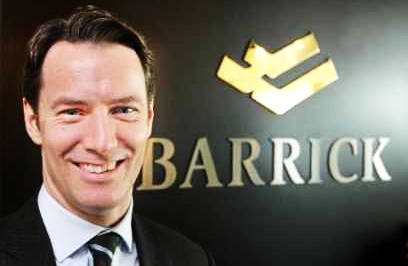
Copper record highs means the base metal is making headlines most every day; merger and acquisition mania is now in full flight. MiningFeeds.com takes a look at a couple of TSX listed junior copper miners that noted CIBC analyst Ian Parkinson says are ripe for takeover.
But first, let’s revisit the manic events from earlier this year that ultimately culminated in Barrick Gold’s (TSX: ABX) $7.8 billion takeover offer for Equinox Minerals (TSX: EQN).
- January 12, 0111 – Lundin Mining launches a friendly takeover of Inmet Mining – combined transaction value $9 billion.
- February 28th, 2011 – Equinox Minerals launches a hostile takeover of Lundin Mining – transaction value $4.8 billion.
- March 21st, 2011 – Lundin rejects Equinox bid.
- March 22nd, 2011 – Lundin/Inmet deal hits a roadblock when Panamanian government rejects Inmet’s plan to use coal-fired power at its proposed Cobre Panama mine site.
- April 4th, 2011 – Minmetals Resources launches hostile takeover of Equinox Minerals – transaction value $6.3 billion.
- April 11th, 2011 – Equinox rejects bid from Minmetals.
- April 25th, 2011 – Barrick Gold launches friendly takeover of Equinox Minerals – transaction value $7.7 billion.
- April 25th, 2011 – Barrick’s offer quashes Equinox takeover of Lundin Mining.
- April 26th, 2011 – Minmetal Reources retracts hostile bid for Equinox Minerals.
Clear? In what has undoubtedly been one of the most interesting three and a half months in TSX history, investors and industry experts are still processing this flurry of events that have Barrick, the world’s largest gold mining company, making a move that will double its copper production. Some analysts feel, two years after taking the helm of Barrick Gold, President & CEO Aaron Regent has put his stamp on Barrick with a bold diversification that marks a return to his roots. Regent is former President of Falconbridge, which was acquired by Swiss mining giant Xstrata in 2006.
Both in sheer volume and dollar value, 2010 was a record year in mining mergers and acquisitions. But given the frantic start to 2011, it is very likely that this year will eclipse it. We look at two copper mining companies – Duluth Metals (TSX: DM) and PolyMet Mining (TSX: POM) – that one analyst thinks may be potential takeover candidates, in all likelihood by Chinese concerns. China consumes almost forty percent of the world’s copper production yet holds only 6.3 percent of the world’s copper reserves, the key reason it has been purchasing stakes in copper assets, particularly concentrate producers.
Duluth Metals is developing a copper-nickel-precious metals project in the mining district of the Mesabi Iron Range in northeastern Minnesota and is the number one pick of CIBC analyst Ian Parkinson. Duluth topped his list of more than 160 companies when ranked by attributes including share price and the size, quality and likely production cost of their assets. Duluth owns 60 percent of the Nokomis Project in Minnesota and has the highest-grade copper among the 25 companies in Parkinson’s shortlist of potential acquisition targets. The company, based in Toronto, ranked third in the size of its resources and has the third-lowest likely cash cost per pound according to the CIBC analyst’s calculations. On March 7th, 2011 Duluth expanded its position in the area when it acquired all of the issued and outstanding common shares of Franconia Minerals Corporation (TSX: FRA) that it did not already own in a transaction valued at approximately C$77 million. Shares of Duluth Metals closed today at $2.40 down $0.04.
Second on Parkinson’s list is Polymet Mining which also plans to mine in Minnesota. Based on the CIBC report, Polymet would have the lowest cash costs and the most production per dollar of capital expenditures among the companies reviewed. Polymet Mining also ranked #1 in the Diversified Metals & Mining industry as measured by the potential gains between the current stock price and the projected average analyst target. According to Zacks Investment Research, Polymet has a potential upside of 132.3% based on a price of $2.15 at the time of the report and an average consensus analyst price target of $4.99. Polymet Mining’s shares closed today at $1.90.
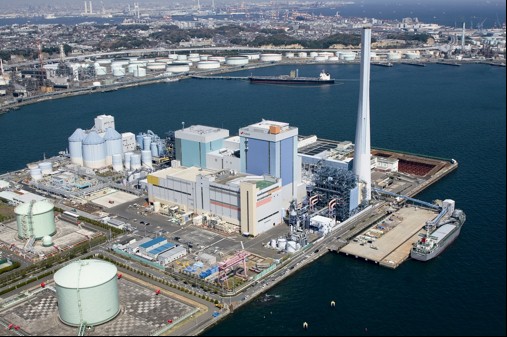
Thermal coal is gaining steam. When thermal, which is the cheapest and most common type of coal, is burned its steam powers turbines that generate electricity for either public electricity grids or for large-scale industrial use. In a recent analyst poll by Reuters, forecasts for average 2011 thermal coal prices were solicited from 22 analysts and industry players. The poll, which was conducted in February, 2011, was $30-37 a tonne higher than the predictions given a year earlier. From the survey, the median forecast for the black carbon delivered in Amsterdam-Rotterdam-Antwerp (the European benchmark) for 2011 was estimated at $121.00 a tonne.
Prices for thermal coal began to rise in December, 2010. Supply constraints were the culprit; wide-spread flooding in Australia’s Queensland State was the catalyst. Australia is the world’s number one exporter of coal (thermal and steelmaking) accounting for about 26.5% of worldwide exports. And then there was the devastating earthquake in Japan. Since then, the European benchmark has risen nearly 11% to $135 a tonne, a 2.5 year high.
On April 1st, global diversified mining giant Xstrata (LSE: XTA) and Japanese utility company Chugoku Electric settled an annual coal contract at record levels. The contract was ultimately settled for just under $130 per tonne, more than thirty percent higher than last year, despite the current weakness in coal demand caused by the earthquake in Japan. Several power plants were damaged in the disaster so some utilities deferred their cargoes to a later date.
Japan is the world’s largest thermal coal importer and, at some point, Japanese demand for power will recover as factories reopen and the country rebuilds itself. And with the possibility that nuclear power output will be constrained, coal-fired plants will have to work harder to produce more power. June through September is the country’s traditional peak months for electricity consumption and some industry experts predict Japan will require an extra 500,000 tonnes per month. On average, Japan consumes 10 million tonnes of thermal coal each month.
Some think the boom in imported thermal coal demand across Asia, led by Japan, China, South Korea and India, could last for the next several years. With industry experts bullish on demand, we take a look at a couple of Canadian listed thermal coal companies that could stand to benefit from these prognostications.
Coalspur Mines (TSX:CPT) is based in Hinton region of Alberta, Canada. Coalspur’s flagship coal project is the Vista Coal Project which, the company believes, has the potential to be one of the largest thermal coal mines in North America. The project is being developed to meet the expected growing energy demands from the Asia Pacific market. The Vista Coal Project has a NI 43-101 Measured and Indicated coal resource base of over 900 million tonnes. Coalspur is currently undertaking a bankable feasibility study on the project which is anticipated to be complete before the end of the year. The processing facility is expected to cost close to $1 billion. Coalspur recently announced a $55.5 million financing at $1.85.
Sherritt International (TSX:S), perhaps better know as a leader in the mining and refining of nickel and its energy operations in Cuba, a lesser known fact about Shirritt is that it’s the largest thermal coal producer in Canada. Sherritt operates seven mine-mouth mines in Alberta and Saskatchewan. These mining operations supply electricity generation companies with coal under long-term contracts. Annual production from Sherritt’s mine-mouth operations is estimated at 35 million tonnes. The company also produced 4 million tonnes of thermal coal from its mountain mining operations. On February 23rd, 2011 Sherritt reported fourth quarter net income of $81 million, or $0.27 a share, up from $48.3 million, or $0.16 a share, a year earlier. Sherritt’s shares closed the week at $7.65.
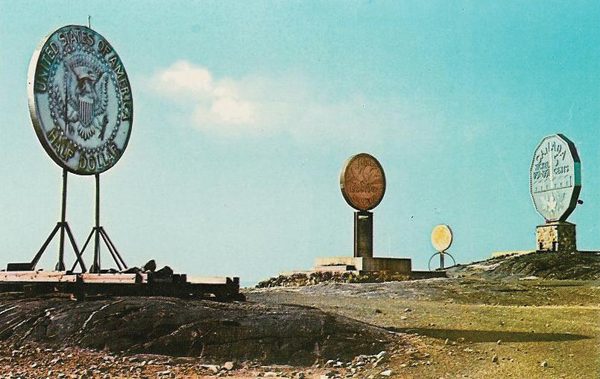
In the mining circles of Sudbury, Ontario it takes a lot to raise an eyebrow.
The resource business has been ingrained in the town for a long time. Long enough, in fact, that Sudbury’s founding dovetails with the very creation of the country. During construction of the the Canadian Pacific Railway in 1883, blasting revealed high concentrations of nickel-copper ore at what was then a small lumber camp on the edge of the Sudbury Basin. As the twentieth century dawned, The International Nickel Company sauntered into town. Today, INCO’s (now Vale Limited) Copper Cliff processing facility remains the largest nickel smelting operation in the world.
On Tuesday, Sudbury’s claim as one of the western world’s preeminent mining towns got a shot in the arm. Vancouver’s Quadra FNX (TSX:QUX) made what CEO Paul Bly called “one of the most significant discoveries made in the Sudbury district in the past 40 years”. A 43-101 report from the company’s Victoria project showed an inferred resource hat totaled 12.5 million tonnes grading 2.3 per cent copper, 2.2 per cent nickel and 8.5 grams per tonne total precious metals. Quadra FNX will begin to develop the project next year and an internal scoping study estimates the mine will begin producing in 2017.
Quadra FNX was formed in May, 2010, through the merger of Quadra Mining and FNX Mining. Geographically, the company is an unusually diverse mid-tier miner, with properties in the US, Chile and Greenland. Investors, however, are clearly excited by the singular prospect of the Victoria project. Today, shares of the company closed at $15.59, up more than ten percent, on heavy volume.
Those bullish on Quadra FNX’s prospects no doubt feel the company’s timing is exceptional; the price of copper has risen ten fold in the past decade, tacked on 30% in 2010, and recently broke through the $1,000 per tonne mark. The price of copper has risen so high, in fact, that it actually now costs The Royal Canadian Mint 1.7 cents to produce a penny.
Many analysts, predictably, point to demand from China. Li Yihuang, chairman of China’s largest copper producer Jiangxi, says he expects Chinese demand may grown by 7% this year.
Quadra FNX produced 224 million pounds of copper in 2010 and 148,000 ounces of precious group metals. In 2011, the company says it expects to produce 240 million pounds of copper, seven million pounds of payable nickel and 115,000 ounces of precious group metals.

After the market closed yesterday, Teck Resources (TSX:TCK.B) released its Q1 2011 financial results. The rosy report included earnings of $461-million, or 78 cents per share. Adjusted quarterly profit was $450-million, which was more than double the $198-million reported in the first quarter of last year.
Because January floods ravaged Australia, the world’s number one exporter of coal, some expect steelmaking coal contract prices may rise to more than $300 a metric tonne. According to Daiwa Capital Markets, the floods, which have been described as the worst in a half-century, disrupted output from producers including BHP Billiton and Rio Tinto Group in Australia’s Queensland state. In a recent interview, Arun Kumar Jagatramka, Managing Director of India’s Gujarat NRE Coke noted, “Coking (steelmaking) coal price has been seeing a steady climb upwards for last six months. Coking coal benchmark price for the quarter April to June has been set at $200 compared to last year’s benchmark at $128 per tonne.”
Steelmakers in China are driving demand for coal. But analyst John Hughes of Desjardins Securities pointed out that it’s not just this predictable narrative that has pumped up prices, it’s overall global demand from steelmakers. Although China and India are by far the world’s largest importers, several other countries have emerged as substantial buyers, including South Korea, Taiwan and Malaysia. Demand from these emerging markets is expected to increase and absorb production from long-haul coal that originates in South Africa and Columbia.
“Once again we rely on Asian demand to be the driver for coal prices but if there were no issues on the supply side, demand from Asia would produce only a slower, steady rise in prices,” said Emmanuel Fages, an analyst with Societe Generale, in Paris. There are, however, issues on the supply side that could be a net-positive for Teck’s metallurgical coal interests. Teck CEO Don Lindsay recently told the Globe and Mail “We anticipate improved earnings from coal in the second quarter.” Investors, it seems, like the sound of that. Shares of Teck are currently up $2.77, or nearly 6% today.
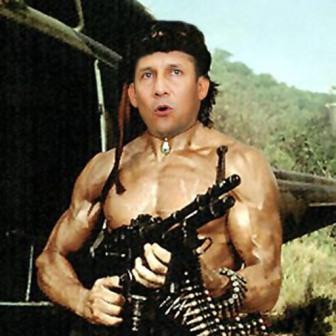
Ollanta Humala is not a name that many outside of South America are familiar with. In 2006, however, the Peruvian Nationalist actually won the first round in Peru’s 2006 presidential vote. Although Hugo Chavez openly backed him Humala was, ultimately, defeated in a runoff 53 per cent to 47 percent by current Peruvian President Alan Garcia.
Humala was back in the news this past Sunday when, yet again, he won the first round of Peru’s elections with 31.7 % of the vote. This sets the stage for another runoff which is scheduled for June 5th, this time against Keiko Fujimori, the daughter of incarcerated former President Alberto Fujimori. On 7 April 2009, Alberto Fujimori was convicted of human rights violations and sentenced to 25 years in prison for his role in killings and kidnappings by the Grupo Colina death squad during his government’s battle against leftist guerrillas in the 1990s.
Peruvian Nobel literature laureate Mario Vargas Llosa went as far as to call the Humala-Fujimori runoff option “a choice between AIDS and terminal cancer,” given their perceived anti-democratic tendencies. Vargas Llosa was defeated by Alberto Fujimori in Peru’s 1990 elections.
The Peru election results caught the financial markets off guard. The cost of insuring Peru’s debt against default has jumped to a five-year high relative to neighboring Colombia, on concern that Ollanta Humala may win the presidential vote and expand government control over the economy. Marjorie Hernandez, a currency strategist at HSBC Holdings Plc in New York stated, “While everyone had expected this to be a non-event election, we were proven wrong. The market was not positioned that way. Everyone was long Peru everything.” Since Peru is ranked #5 on the world’s mining exploration list, the political instability is spilling over to the mining sector.
Compañía de Minas Buenaventura S.A. (NYSE: BVN), Peru’s largest publicly-traded mining company, with seven operating mines in the country, is being hit hard this week down $4.50 to $39.00 (10.3%).
Some Canadian listed Peruvian precious and base metal juniors have also been affected by the news. Candente Copper (TSX: DNT) is down $0.24 to $1.56 (13.3%), Tinka Resources (TSX-V: TK) is down $0.04 currently trading at $0.60 (6.3%); while Duran Ventures (TSX-V: DRV) has managed to buck the trend and is up half a cent.
Peru is the world’s largest silver producer, second in zinc, and sixth in gold production. Peruvian silver production totaled 135.8 million ounces in 2009. Meanwhile, zinc and gold production totaled 1.50 million tons and 6.42 million ounces, respectively. So when Humala talks about renegotiating mining contracts with foreign companies, investors naturally take note.
But Eduardo Suarez, a strategist at RBC Capital Markets in Toronto thinks the market may be overreacting. In a report on March 29th, he estimates Humala’s chance of becoming president at about 20 percent, and believes recent declines in asset prices are overdone. Suarez says “the current sell-off should be seen as a buying opportunity, but timing is key.”

With the TSX composite index down almost 500 points in two trading days investors are back on the fence waiting for, what some say, could be a long overdue correction in the global equity markets. Before the correction, the TSX was up 7.5% since the start of the year. Thomas Lee, a U.S. equity strategist at J.P. Morgan recently stated the pullback should begin soon enough, “Our view continues to be that we see a pullback in equities taking root sometime in late-March (or) April.”
In February, James Dailey, portfolio manager of TEAM Asset Strategy Funds in Harrisburg, Pennsylvania may have summarized the markets best when he said, “Are we due for a pullback? Yes. When? That’s the big question. Money just keeps flowing into equities.”
Now, in the midst of a swift correction, some investors may think that with a strong start to 2011 and impressive finish last year the table may be set for a nasty pullback in 2011. The TSX rose 19 per cent in the last half of 2010. UBS strategist George Vasic notes whenever the TSX composite has had a gain of greater than 10 per cent in the second half of a year, its performance the following year has been substantially better. “While tactical fears can be justified, the bottom line is that we believe the trend is your friend in the current circumstances,” said Vasic.
Having just hit $1,477.65 an ounce yesterday morning gold has also experienced a selloff over the past two trading sessions. Gold is currently $1,450 down $27.65 since the high. But some don’t expect gold to top out any time soon. According to a new analyst report from UK based Standard Chartered Bank the price of gold will likely reach $2,100 an ounce within three years. The report added: “The bull run in gold is likely to continue for some time, but prices should peak around 2014 as supply finally catches up with demand and US real rates turn positive.”
With both equity markets and gold taking it on the chin it appears investors, for the moment, are content to take profits and sit on the sidelines. While the markets take a breather, we look at a few junior gold companies that are flying high in 2011 having made some noteworthy announcements from drill programs this year.
On April 4th, 2011 Trelawney Mining and Exploration (TSX: TRR) released additional drill results from the Cote Lake deposit on the Chester project located halfway between Timmins and Sudbury in Northern Ontario. As part of the company’s expansion drill program Treleway announced the results from three holes: (Hole E11-48) 285.80 metres of 1.18 grams per tonne gold; (Hole E11-49) 275.00 metres of 1.26 grams per tonne gold; and (Hole E11-53) 304.00 metres of 1.65 grams per tonne gold. Greg Gibson, Trelawney’s president and chief executive officer, commented: “We are very pleased with the results of this initial step-out drilling. These drill results confirm our belief that our initial resource estimate can be expanded significantly, along with potential increases in grade as these results are above the average grade reported in our initial resource.”
Trelawney also announced similar results on January 5th, January 25th and February 8th of this year marking an impressive start to 2011. The company’s shares have responded accordingly, moving from just under $3.00 per share at the end of 2010 to around $5.00 per share today.
Another strong performer in 2011 has been Gold Canyon (TSXV: GCU), which recently announced on March 29th, 2011 assays from six new holes from its winter 2011 drill program at its Springpole gold project, near Red Lake in Ontario, Canada. Results include 150 metres at 2.56 grams per tonne gold. Dr. Quinton Hennigh, a technical adviser to and a director of Gold Canyon stated, “…we can now confidently say that mineralization starts at surface down the entire length of the Portage zone.” And, “…all six holes bottom in mineralization, suggesting there is more going on at depth.” Similar to Treleway, Gold Canyon has announced numerous results thus far in 2011 including 100.5 metres at 7.23 grams per tonne gold on March 15th, 2011. Gold Canyon shares started the year trading at $2.25 and are currently being exchanged for $3.46.
Also delivering some interesting results in 2011 is Continental Gold (TSX: CNL). Continental has been releasing results from its Buritica project in Antioquia, Colombia since August 2010 and, on March 22nd, 2011, announced 10.8 meters intersecting 43.97 grams per tonne gold. Continental Gold is a top pick of Sentry Investments portfolio manager Andrew McCreath who stated on BNN Market Call Tonight on March 30th, 2011 that he expects the company will continue to deliver in 2011. This time last year Continental’s shares were trading at $2.50, and despite the recent correction in the equity markets, the company’s shares are trading at $8.30.
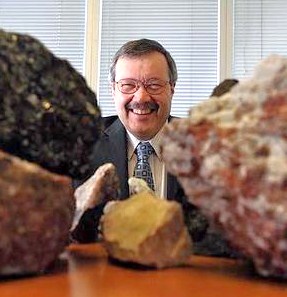
On December 21st, 2010, Avalon announced it would list on the NYSE Amex exchange. The company’s shares rose more than 20 percent after the announcement, to close the day at $4.91. The added liquidity of a U.S. listing has apparently served the company well. Shares have continued to surge, closing today at $9.13, a fifty-two week high.
To investors these days, it may seem that Avalon Metals can do no wrong. Today’s record high comes on the heels of a press release that was not, at first blush, resoundingly positive. The company reported that, over all, their various metallurgical test programs were progressing close to original projected timelines but the hydrometallurgical pilot plant work was forecast to take perhaps four months longer to complete than originally estimated. Subsequently, the forecast completion date for the bankable feasibility study may be delayed until the fourth quarter of 2012.
Avalon President & CEO Don Bubar commented, “We have been pleased with the progress achieved to date on our metallurgical test program and are now implementing measures to ensure that the hydrometallurgical pilot plant work does not significantly delay the completion of the bankable feasibility study.”
In an interview last summer with Rare Metal Blog, Bubar pointed out that Avalon was interested in entering into offtake agreements with buyers, “We’ve had some expressions of interest from different parts of the world and now we are starting to move that forward,” and, “Obviously we’d like to enter into those offtakes as soon as we can, or at least have some sort of relationship in place to see that happen.” To date, however, the only agreements the company has been able to forge have been with two Native groups; the Yellowknives Dene First Nation (December 8, 2010) and the Deninu K’ue First Nation (February 8th, 2011) regarding the development of their Nechalacho rare earth elements deposit in Thor Lake, NWT.

The Japanese disaster, now approaching its one month anniversary, continues to be the only topic of discussion for investors in uranium stocks.
The spot price of Uranium fell 10%, to $60 per pound immediately after the earthquake and tsunami created a nuclear incident at the Fukushima reactor, sending low levels of radiation drifting south to Tokyo. Uranium prices eventually fell as low as $49.25 (U.S.) per pound. Perhaps a lesser known fact amongst casual observers is that uranium prices have almost completely recovered. By March 24th, the price of uranium was back to $61.13.
What’s behind the speedy recovery? Many analysts point to a lack of real options for replacing nuclear energy, which supplies 13.5 per cent of the world’s electricity generation. Independent analyst Peter Strachen says the situation will “…basically blow over in the next 12 to 18 months, as people realize that there’s no real alternative in the short to medium term, for large, baseload power supply.” Strachen points to a number of new plants being built in India, China and Brazil.
Analysts with The Bedford Report agree. They say that China is currently in the process of quadrupling its uranium consumption to fifty to sixty million pounds a year, and says it plans to build ten nuclear power plants a year for the next decade. Even as the Japanese crisis hit its darkest hour, with the crisis at the Fukushima Daiichi nuclear power plant still not contained, the Obama administration said that “nuclear power will remain a key component of America’s energy mix, despite worldwide anxiety over the safety of reactors.” The US currently has 104 reactors in 31 states.
Raymond James mining analyst Bart Jaworski talked to the Globe and Mail recently about what he believes is the opportunity the disaster has created for investors to buy quality uranium stocks at a discount. He said “We expect this situation to be no different than what happened after the Three Mile Island (1979) and Chernobyl (1986) accidents, where reactor growth continued quite strongly due to the large amount of reactors already in construction phase.”
Two of Jaworski’s favorite picks are Cameco (TSX:CCO) and Paladin Energy (TSX:PDN). Cameco is down just over 19% since the Japanese disaster, from $36.32 on March 11th to $29.25 on April 6th. Paladin Energy is down about the same percentage, from $4.66 on March 11th to $3.82 on the close today. A look at other TSX listed uranium plays reveals similar, or better, numbers. Denison Mines (TSX:DML) has forfeited a shade over 20% of its pre-Japan price, First Uranium (TSX:FIU) is down just 8%.
And then there’s Uranium One (TSX:UUU). Despite a modest recent rally, the Vancouver based miner is still down nearly 33% since the Japanese quake, from $5.96 on March 11th to $4.04 on April 6th.
In early March, Uranium One reported record annual revenue of $327 million for 2010 after it sold 6.9 million pounds of uranium at an average price of $48 per pound. The company increased its cash on hand to $315 million from just over $148 million the year prior.
Sort through Uranium One’s recent financials and you’ll soon find a staggering loss of $148.2 million, or twenty four cents a share in the fourth quarter of 2010. The company was hit by a one time $113.5 million writedown at its Honeymoon Uranium project in Australia. Excluding the writedown, Uranium One actually earned a penny a share in the quarter.
And while the Japanese nuclear incident was bad news for all uranium miners, it may have ultimately affected Uranium One positively in at least one way. At the time the Japanese crisis hit, the company was in negotiations to buy Mantra, an Australian uranium miner with projects in Africa. ARMZ, a subsidiary of Russia’s atomic energy agency that owns a controlling stake in Uranium One, had offered to buy Mantra for (AUS) $8 per share, but after the crisis lowered the offer to (AUS) $7.02 a share, valuing the company at just over a billion dollars. In late March, Mantra’s board of directors advised shareholders to accept the revised agreement “after taking into consideration the current global equity market conditions and increased uncertainty for the uranium sector”.

- Encanto President & CEO Jim Walchuck and Muskowekwan Chief Reg Bellerose in joint development of Saskatchewan potash.
After a brief pause, the price of potash is on the rise once again. Demand is now expected to top fifty million tonnes in 2011. Just a few years ago Potash was once a seemingly minor commodity, worth less than $175 a tonne. But with agricultural demand surging, most analysts today expect it will find a price base between $400 and $500 per tonne this year. And Saskatchewan, once habitually depended upon federal transfer payments, is now a relative rock star on the international potash stage because it produces about a third of the world’s annual supply.
In Saskatchewan, the concentration of potash-power, properties and projects, are in the hands of just a few: Potash Corp. (TSX: POT), Agrium (TSX: AGU) and Mosaic (NYSE: MOS) dominate the landscape. But 2008 saw a new entrant on the scene when Encanto Potash (TSXV: EPO) signed its first Exploration Participation Agreements with the Muskowekwan First Nation of Saskatchewan. This was the first step in securing what is, according to Encanto’s President Jim Walchuck, “a collection of properties that offer great exploration and development potential that we simply could not have secured anywhere else in Saskatchewan.”
Many believe this type of arrangement is a modern day necessity in Saskatchewan as dozens of native lands claims are currently under review. Some bands, such as the Cote, Key and Keeseekoose First Nations, have received ground-breaking Federal settlements of up to $80 million.
In resource rich Western Canada, dialogues and partnerships between native groups, industry and government are becoming more common. And that mindset is spreading; the Yukon government recently noted that, “Native groups have demonstrated that they are willing to work with responsible exploration and mining companies and support their projects in exchange for the consideration of benefits to the local community.”
In March, 2011 the first Métis Economic Development Forum was held between business leaders in Saskatchewan and the Métis First Nation. Corporations including world Uranium giant Cameco, SaskEnergy and SaskPower were in attendance. Topics such as partnerships, procurement and community economic development were discussed. Métis National Council President Clément Chartier said, “If we are to begin making a difference in our communities, we need to host frank, open discussions between business and grassroots. It was encouraging to hear industry leaders say they are eager to do business with our people but need their expertise to open the way.”
It’s hard not to notice the tenor of business conversations in this part of the world has become more conciliatory and pro-business. One of Saskatchewan’s more proactive Native groups, for example, the Meadow Lake Tribal Council, owns multiple corporations including NorSask Forest Products. Newly elected Chief Eric Sylvestre recently said he is willing to “Sit down with industry and work out some arrangements”. Sylvestre pointed to oil and gas, and potash as possible areas for future business development and was quick to note when he identified BHP Billiton as a potential partner, “They have a good track record in dealing with First Nations.”
Since securing their arrangement, Encanto Potash has obtained INAC (Indian Northern Affairs Canada) permits on three of its development agreements and, on March 18th, 2011, the company announced its first NI 43-101 resource estimate of 79.1 million metric tonnes of indicated recoverable KCl and 60.5 million metric tonnes of inferred recoverable KCl with a proposed solution mining scenario similar to that of Potach Corp.’s Patience Lake project.
In a recent conversation with the MiningFeeds.com, Encanto head Jim Walchuk said the joint venture with Muskowekwan First Nations was more than just a milestone: “We see our partnership providing many opportunities such as possible tax benefits, a continuous land package and an efficient permitting path with just two stakeholders: Muskowekwan First Nation and Indian and Northern Affairs Canada. Following our recently announced resource estimate on the Home Reserve, we have definitely moved our partnership to a new level. We believe Encanto is in a very enviable position for developing this project.”
Walchuck feels good about his company’s partnership with the Muskowekwan First Nations, a sentiment that is echoed by Muskowekwan Chief Reg Bellerose who said the arrangement “…provides a framework for potash development in our territory, allows our nation to participate and benefit fully, and most importantly, ensures that these developments do not compromise our existing rights, assets, environment and culture. This is a formula our nation can accept and obviously so can industry.” And when describing the benefits to his people Chief Bellerose added, “It is good for a community, it is good for our First Nation, and it is is good for our future. For our children to have an opportunity where they normally wouldn’t.”

For more than two years, the rise of Romarco Minerals (TSX:R) has been nothing less than remarkable. As late as October, 2008 shares of the Toronto based company could be had for a dime. The promise of the company’s pending Haile gold project in South Carolina, however, has meant a steady rise to recent highs near the three dollar mark, and helped the junior graduate to the TSX last November.
The Haile gold mine is a historic property in Lancaster County, South Carolina, that was actually one of the first operating gold mines in the United States, dating its history back to 1827. Over the centuries, the mine has been in and out of production. It was actually once a target of General Sherman in the Civil War, and was used to mine pyrite during World War One. The rise and fall of the Haile Mines’ profitability reads like a history of modern mining methods. The golden age of the mine actually began seven decades after its discovery, when German engineer Adolph Thies developed a process called the “Thies Barrel Chlorination Process” to extract gold from low-grade ore.
Recently, Romarco minerals learned that modern mining techniques may determine whether or not the colorful history of the Haile mine has a future. Romarco suffered its first real setback since taking on the project when, in a March 25th letter the US Environmental Protection Agency recommended that federal regulators deny a wetlands permit required to move the project forward. Romarco is currently waiting on two permits; a state mining permit and the federal 404 wetlands permit which is overseen by the U.S. Army Corps of Engineers (USACE), an agency of more 36,000 civilian and military personnel that is charged with coastal protection in the US. While the state mining permit closed its comments in February with what the company described as “few comments received” the wetlands permits is another matter entirely.
In his letter to the USACE, James Giattina, a regional water protection division chief with the EPA say the Romarco revival of Haile “has the potential to have a significant level of direct impacts to a wide variety of natural and human resources.” The EPA did leave the door somewhat open, noting that a formal environmental assessment could satisfy its concerns.
Romarco Chief Operating Officer Jim Arnold says that concerns based on past mining operations can’t be applied to Romarco because the company uses safer and more modern technology to ensure little environmental impact. The company says that diluted cyanide solution will be contained in steel tanks with the appropriate secondary containment designed to contain, at a minimum 110% of the largest tank. It will then encapsulate the project by placing a lining under and over any potentially acid generating waste stockpiles. Romarco will also install seepage collection and detection systems to treat drain down. Arnold told The State that Romarco’s Haile mine “is going to be the showcase mine in South Carolina and the world.”
And Keith Tunnel, an official with the Lancaster County Economic Development, says the mining won’t occur on pristine wetlands, but on property that “has been mined at least five times since the 1830s.”
While USACE spokesperson Sara Corbett says there is no timetable to grant the wetlands permit, investors bullish on Romarco no doubt believe the potential reward for waiting is great. In February, an independent feasibility study estimated that Haile will be one of the “lowest operating cost and highest-grade open-pit gold mines in the industry” and that Haile contains two million ounces of gold. The report went on to say, “Significant upside potential exists within and surrounding the Haile mineralized system, which continues to remain open in all directions and at depth.”
At press time, shares of Romarco were $1.85 up a penny on volume of more than 6.1 million shares.
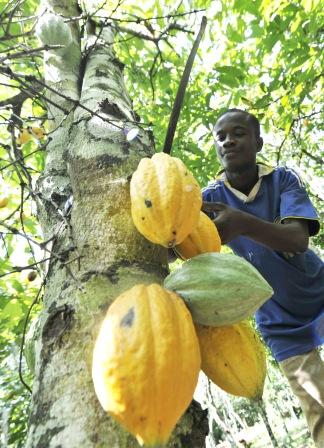
In what has become a near daily occurrence, civil unrest erupted in another developing African nation today. The Ivory Coast is in the news once again. On Saturday, the Red Cross said that at least 800 civilians were killed in inter-ethnic violence in the city of Duekoue by fighters supporting UN-recognized president Alassane Ouattara.
With unprecedented demand for mining commodities, junior mining companies have braved international geopolitical risks in exchange for NI 43-101 resource estimates. Over the past ten years, the Ivory Coast has faced its share of political uncertainty. But this issue has had no perceivable affect on mining; a number of juniors operate there. So how can investors in junior mining stocks price in the level of political risk associated with the Ivory Coast? The answer, curiously, might be by carefully watching the price of cocoa.
In 1960, the Ivory Coast gained independence from France which was then French West Africa’s most prosperous country, contributing over 40% of the region’s total exports, including much of the world supply of cocoa. For the two decades that followed independence, the economy maintained an annual growth rate of nearly ten per cent, the highest of Africa’s non-oil-exporting countries. As the new millennium approached it brought political instability to the Ivory Coast. In late 1999, a group of dissatisfied officers staged a military coup that put General Robert Guéï in power. Former President Henri Konan Bédié fled in exile to France. General Guéï was quickly replaced, in the year 2000, with the election of Laurent Ghagbo. Ghagbo was welcomed into office by a brief civil war in 2001 that lead to a “government of national unity” between rebel leaders and Ghagbo’s administration.
As a result of the instability, the presidential elections scheduled for 2005 were postponed and, finally, held in November 2010. The preliminary results announced by the Electoral Commission showed a loss for Gbagbo in favour of former prime minister Alassane Ouattara. Gbagbo contested the results before the Constitutional Council charging massive fraud in the northern departments which were controlled by the rebels. In response, the African Union sent former South African President Thabo Mbeki to mediate the conflict.
The contested election results raised fears of yet another civil war and thousands of refugees have fled the country. Eventually, the U.N. Security Council adopted a common resolution recognizing Alassane Ouattara as winner of the elections, based on the position of the Economic Community of West Africa States. But Gbagbo has not yet stepped aside. In January, 2011 it was reported that West African military commanders were preparing a contingency plan to remove Ivory Coast President Laurent Gbagbo by force if he failed to peacefully transfer power to Alassane Ouattara.
Because the country is the world’s largest supplier of cocoa, recent tensions in the Ivory Coast have resulted in a steady upward move in the price, from $2,874 per tonne in September, 2010 to just under $3,500 last month. In March, however, the price of cocoa fell as many believed that recent actions indicated the situation was finally coming to a head. Bloomberg reported that the Republican Forces who are seeking to oust incumbent leader Laurant Gbagbo are likely behind the latest attacks outside of Abidjan.
So is the declining price of cocoa a bullish indicator for miners operating in the Ivory Coast? Some do expect that an end to the Ghagbo situation will bring political stability to the country and could positively impact junior miners doing business there.
Sama Resources (TSXV:SME) primary project is the Samapleau Nickel/Copper project in the Ivory Coast. On January 15th, 2009, a Memorandum of Agreement between La Société pour le Développement Minier de la Côte d’Ivoire (SODEMI) and Sama Nickel Corporation was signed to undertake exploration under Exploration Permit No. 123. With Ghagabo under pressure, investors appear to be viewing the events in a positive light – the company’s shares were up $0.05 this past week to close at $0.38.
Perseus Mining Limited (TSX:PRU) a gold mining junior interlisted on the Australian and TSX Exchanges is drilling their secondary project (Tengrela Gold Project) in the politically charged nation. But Perseus’s flag ship project is the Central Ashanti Gold Project, located in neighbouring Ghana, so tensions in the Ivory Coast have not impacted the company to any large degree. Shares of Perseus have traded in a narrow range this year; between $3.20 and $2.60. Shares closed Friday at $3.14, down just a penny on the day.
La Mancha Resources (TSX:LMA) is producing gold at their Ity mine in western Ivory Coast. On December 17th, 2010 the company reported activities were actually suspended due to the country’s political situation, but operations resumed in February. Dominique Delorme, President & CEO noted: “We expect that the situation will continue to rapidly evolve in the area surrounding the mine for the time to come. Luckily, our ability to quickly suspend and restart activities at the Ity mine gives us the flexibility to adapt ourselves to the evolution of the political situation.” The Ity mine accounts for 15% of the company’s annual gold production. La Mancha is also conducting exploration on other properties in central and eastern Ivory Coast. Shares of the company have been almost as volatile as the political action in the Ivory Coast. In the past two months shares have seen a high of $2.75 and a low of $1.70. The closing price on Friday, April 1st, was $2.32 up $0.05.
If you would like to receive our free newsletter via email, simply enter your email address below & click subscribe.
CONNECT WITH US
Tweets
Tweet with hash tag #miningfeeds or @miningfeeds and your tweets will be displayed across this site.
MOST ACTIVE MINING STOCKS
Daily Gainers
 Lincoln Minerals Limited Lincoln Minerals Limited |
LML.AX | +125.00% |
      |
GCR.AX | +33.33% |
      |
CASA.V | +30.00% |
      |
AHN.AX | +22.22% |
      |
ADD.AX | +22.22% |
      |
AZM.V | +21.98% |
      |
NSE.V | +21.05% |
      |
DYG.V | +18.42% |
      |
AAZ.V | +18.18% |
      |
GLA.AX | +17.65% |




 Follow us on Twitter
Follow us on Twitter Become our facebook fan
Become our facebook fan








